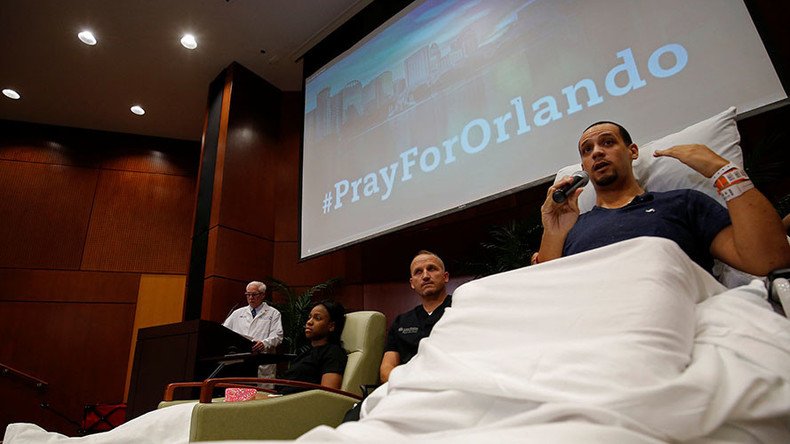Mass media shootings: The connection between massacres and TV ratings (VIDEO)

It seems that every few months, a flag is being lowered to honor victims of a senseless crime. Then there is the wall-to-wall news media coverage, allowing murderers to become mainstream, which might be what they’re truly after.
From serial killers to mass shooters, if there’s one thing television audiences love, it’s a sordid story of crime with interchangeable victims that could potentially be any one of us. And yet, despite the loop of trauma that the US seems to be stuck in, it’s hard to understand why mass shootings have tripled in the past 15 years.
That is, until you consider that the wall-to-wall coverage may give unstable individuals the recognition they seek.
Now, combine this with the memory of recent mass shooting coverage. According to psychology researcher Dr. Jennifer Johnston who co-authored a paper titled “Mass Shootings and the Media Contagion Effect,” news coverage is skewed to focus more on the lurid crimes than the prevalent ones.
“Fifty percent of news coverage focuses on crime alone, and mostly violent crime, despite other crime being much more common,” the study reads.
When we talk about mass murders and the media, it’s important to know who the people behind the crimes are. In an interview with RT, Dr. Johnston, PhD of Western New Mexico, explained, “A primary trait that many mass shooters share is a desire for fame or notoriety. Often times, they suffer from depression, social isolation, but also narcissism. So they feel entitled to some kind of social standing that they don’t think they’re getting.”
In addition, most people think violent thoughts at some point – it’s relatively normal. According to the study, “about 90 percent of men and a majority of women have had at least one vivid murder fantasy.”
This presents a dangerous mix of troubled individuals who seek public recognition and a sure fire way to receive recognition. Johnston’s study claims that mass shootings act like a contagion and spread, especially “one particular type of homicide that is most influenced by media contagion: mass shooting of strangers in public places.”
Once a suspect has been identified, their face and name become just as recognizable as minor celebrities. Their stories are publicized and are developed by a hungry audience that feeds into the process by boosting ratings for networks and newspapers.
The media then feeds into social media, where a killer’s name will be almost guaranteed to become a trending topic when it is released. But Johnston found that social media too will play into the mass shooter’s need for attention.
For example, here are three mass shootings that have happened with the past five years. The killer’s name has the highest search frequency. Each table has both the killer’s names and their victims and searches for their names and stories pale in comparison to their murderer’s.
As a result, psychologists like Johnston are imploring the media to change how it covers mass shootings.
“We are asking the media to voluntarily adopt a don’t name policy,” she told RT. “We can cover these incidents and let the public know what’s going on but we don’t necessarily need to focus on any individual shooter.”
Instead, she suggests on focusing on the victims, first responders or rescue attempts.
She compared it to an increase of suicides following media coverage of celebrities who killed themselves. Suicides tend to occur in clusters, meaning that when coverage of one suicide is broadcast widely, it can trigger more.
Johnston explained that in the 1990s, media outlets voluntarily agreed to reduce reporting on celebrity suicides.
“Suicides decreased within two to three years after celebrity suicides were no longer reported,” she stated.
If something similar were to occur within mainstream media, she predicts, “we could see a one-third reduction in mass shootings in a one to two year time because the incidents are correlated by time and region.”
What it’s going to come down to, however, is whether the media values ratings over responsibility.













